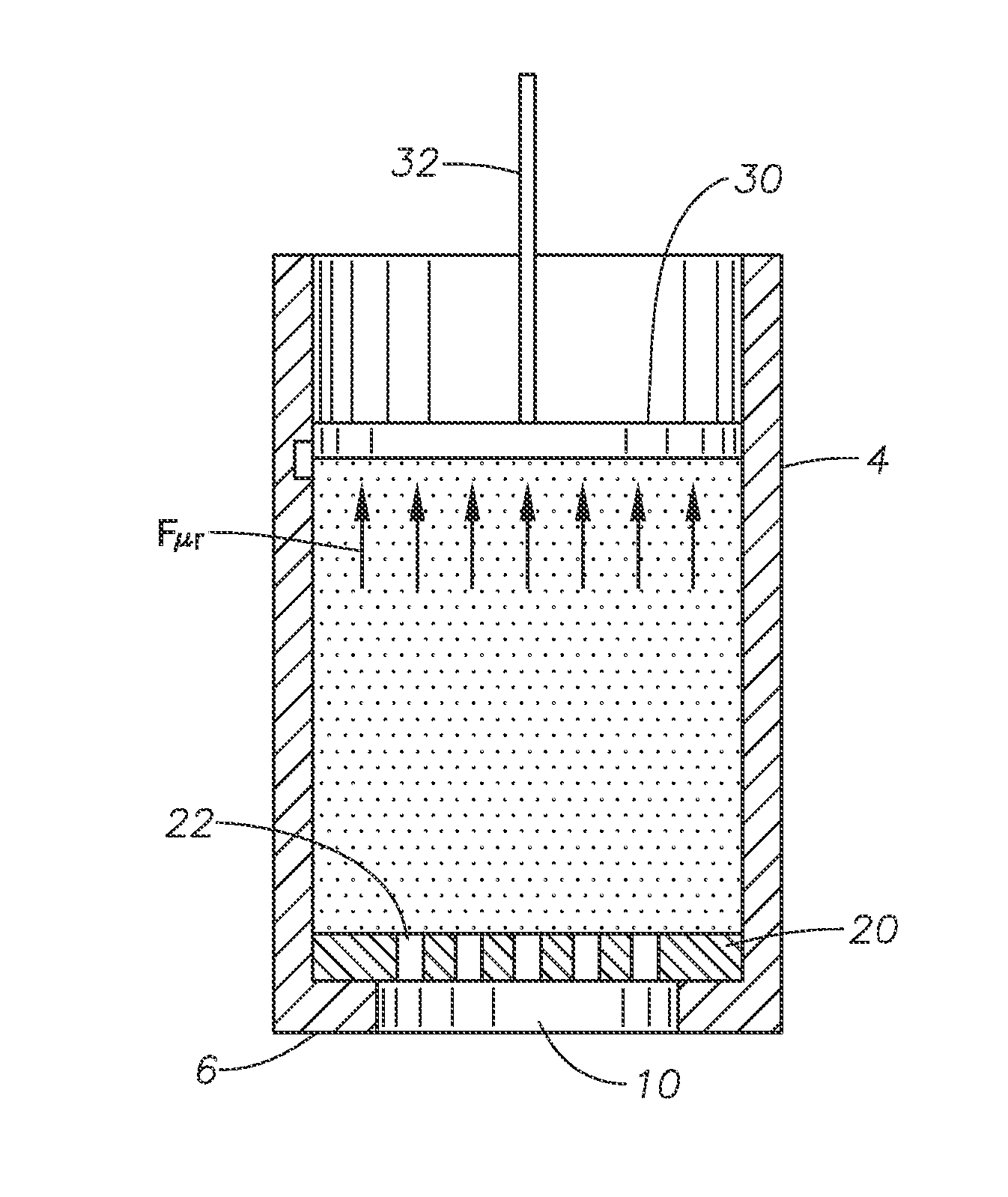Method and apparatus for testing gel-based lost circulation materials
a gel-based, lost circulation technology, applied in the direction of drilling composition, material strength using tensile/compressive forces, instruments, etc., can solve the problems of fluid loss beyond acceptable norms, frequent challenges encountered, and lost circulation
- Summary
- Abstract
- Description
- Claims
- Application Information
AI Technical Summary
Benefits of technology
Problems solved by technology
Method used
Image
Examples
example 1
[0068]In example 1, six different gel-based LCMs (1-6) were produced. Although described with reference to gel-based LCM 1, the procedure for Example 1 was repeated for each of the six different gel-based LCMs. Gel-based LCM 1 was produced by mixing the components for gel-based LCM 1 with a high speed mixture for 10-15 minutes each. Gel-based LCM 1 was set aside for a cure time of 1-2 hours at room temperature and pressure. Without being bound to a specific theory, it is suspected that the cure time provides for inter-particle bonding, networking, and gelling and so the cure time enhances the gel properties of gel-based LCM 1.
[0069]After the cure time, test sample 1 from gel-based LCM 1 was collected. The size of test sample 1 was such that gel-based LCM 1 test sample 1 would fill the LCM test cell to the fill level of the cell space volume. The flat foot disc piston was placed on top of the gel-based LCM 1 test sample 1 so that the flat foot disc piston was flush with the cylinder ...
PUM
 Login to View More
Login to View More Abstract
Description
Claims
Application Information
 Login to View More
Login to View More - R&D
- Intellectual Property
- Life Sciences
- Materials
- Tech Scout
- Unparalleled Data Quality
- Higher Quality Content
- 60% Fewer Hallucinations
Browse by: Latest US Patents, China's latest patents, Technical Efficacy Thesaurus, Application Domain, Technology Topic, Popular Technical Reports.
© 2025 PatSnap. All rights reserved.Legal|Privacy policy|Modern Slavery Act Transparency Statement|Sitemap|About US| Contact US: help@patsnap.com



